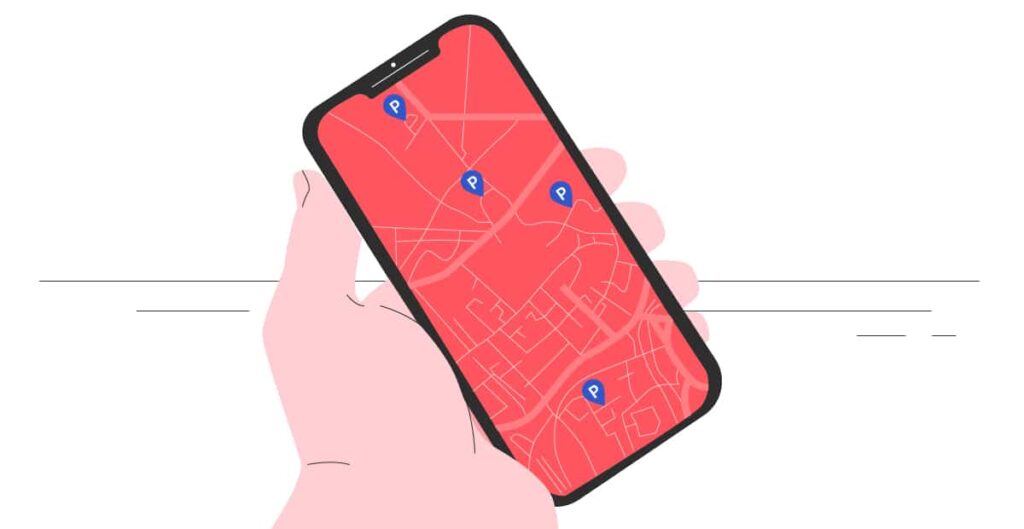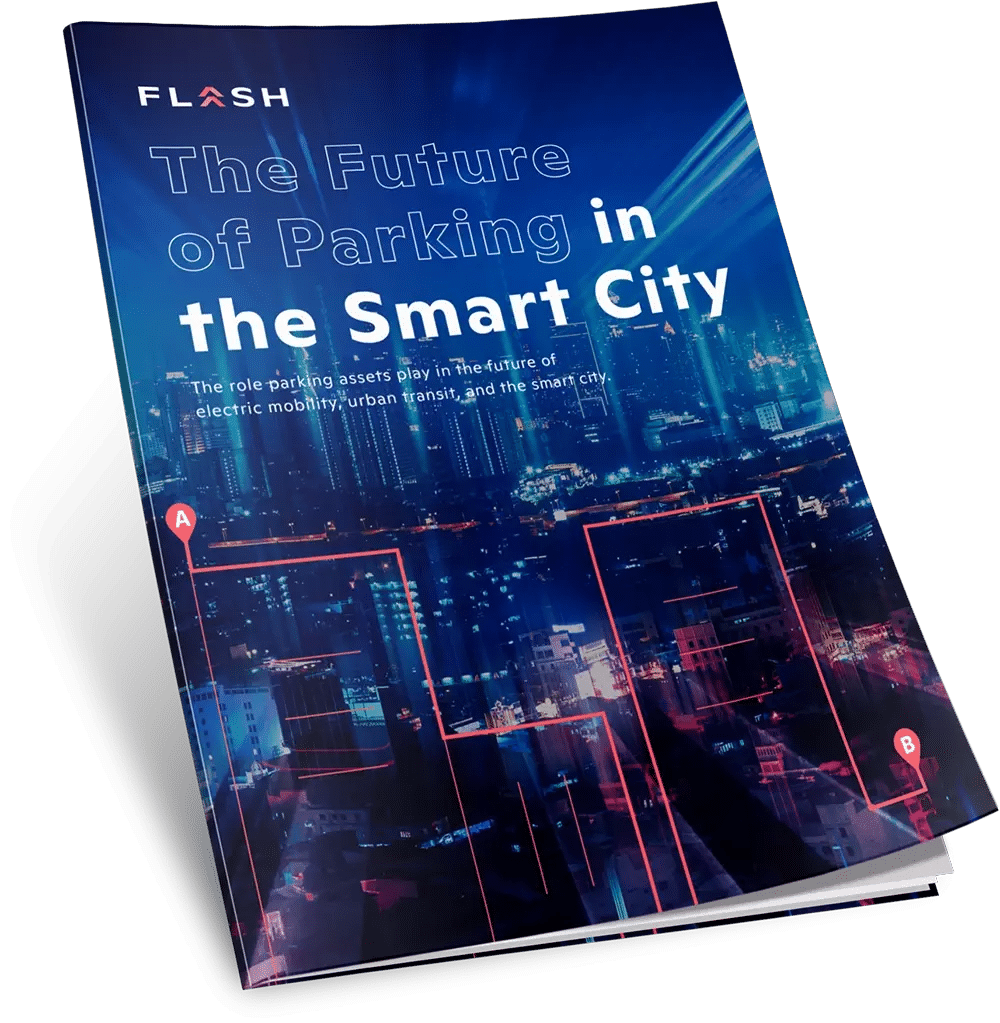Parking and mobility operators spent much of 2021 recovering losses and setting new performance baselines for revenue moving forward. Across the industry, revenues have increased by 25% during the first half of 2021 compared to the last half of 2020, according to the Road to Recovery Index. At the end of 2021, the industry recovered to approximately 52% of pre-pandemic revenue levels.
Mobility in 2022 will be different. Parking trends and the direction of mobility technologies indicate that the year ahead is all about evolution. Operators have the chance to learn from how people prefer to travel and set themselves up for success. By introducing new technology, services, and revenue models, any operator can thrive in the future of mobility.
What Is the Future of Mobility in 2022?

We believe that the future of parking and mobility is the introduction of the modern mobility hub. Smart mobility and smart transportation will take the place of fragmented and independent travel and transit. Technology that talks to itself across networks will enable decongestion and more efficient mobility—which leads to parking assets that provide exceptional value to travelers through added services and smart parking at the exact time of need.
Below, we’ll go deeper into four key trends that we believe will shape the next year of parking and mobility.
The EV Revolution Intensifies

Electric vehicles aren’t just for big cities anymore; they’re permeating smaller communities, partly due to the passing of the new infrastructure bill, which devotes billions to electrifying our roads and fleets. Automotive trends also point toward more EV vehicles as manufacturers commit to electrifying as much as 50% of their models in the next decade.
We get it—as operators, it’s not quite so simple to flip a switch and service EV vehicles. There’s an enormous amount to consider to get your assets primed for charging (we made a starter guide for that). If you’ve never had EV services before, you’ll likely need to invest quite a bit to offer charging services. For those building new assets, it’s easier to integrate EV infrastructure from the ground up. Once operational, EV charging can be a core offering for your business—either for repeat customers or for transients who need a quick top-off before moving on.
There’s no ignoring the EV revolution. Operators can only delay for so long before they lose business to competitors who can charge customer vehicles while they’re at work or during another activity. Deloitte estimates sales reaching more than $31 million by 2030, placing EV as 32% of the total market share for new car sales. If you haven’t yet, it’s best to start working on a plan for integrating EV within the next couple of years.
Connected Vehicles and Artificial Intelligence

We’ve already mentioned the mobility hub as the parking asset of the future. But powering the mobility hub is an assortment of technologies that connect services to each other, ultimately allowing customers to book and pay for journeys via one platform. Vehicles will utilize the same concept of interconnectivity to speak to other cars and transit systems via the Internet of Things network. It’s not just smart cars—the future of mobility is smart everything.
Artificial intelligence will be the brain that governs vehicles communicating with the systems around them. In the near future, cars will sense other vehicles around them in a 360-degree range. Consider the impact this has on driver safety and congestion. Cars will be able to slow down automatically if they sense stops or accidents ahead. They’ll also be able to suggest changes in navigation in real-time based on metro transportation congestion. Operators can also utilize artificial intelligence in solutions that include machine vision, such as license plate recognition, to impact how software communicates with vehicles to govern parking assets and mobility hubs.
For parking, this opens up an opportunity to use technology that can communicate within these systems and offer dynamic services based on the individual traveler. If the person’s EV car is low on charge, the car can communicate with the operator’s asset as a source of charge. The same goes for dynamic parking prices to incentivize the potential customer. The unlocked potential of vehicle communication is significant, and can help operators provide even more value and sources of revenue.
App-Based and Contactless Ecosystems
If there’s one immediately tangible benefit for parking operators from the pandemic, it’s that parking apps have never been more popular. Apptopia reports that downloads and monthly active users of the top parking apps have recently been above pre-pandemic levels. These customers presumably prefer the safety and convenience of contactless payments and pre-trip parking planning in these apps. It’s in every operator’s best interest to integrate their services with digital parking planning. The customer’s parking journey doesn’t start and end on the road anymore—it starts before customers leave their doors.
The mobility app ecosystem extends beyond parking-specific apps. The mobility hub can connect customers from and to different points of their journey. Transit, rideshare, and micro-mobility apps are all used as part of a trip. Many operators are already beginning to integrate these various services as part of their offerings and are increasing visibility across these apps to draw attention. The next year is the perfect time to explore the ways people are traveling near your assets and plan how you can utilize digital technology to turn them into customers.
Flexible Parking and Added Services
We know monthly parking has evolved. It’s no longer sustainable to rely on customers on such a fixed schedule. That’s why operators need to embrace flexibility as a core theme in their services. In practice, that means creating parking packages that give customers a certain amount of time or days in a given month. 2022 is the perfect opportunity to introduce new revenue models as the industry recovers to “new normal” levels. It’s still a transition period and can afford operators some time to develop the right mix of offerings to entice and capture people’s attention.
Flexible parking is a significant step toward the mobility hub. The next year will also be a chance to consider added services that enhance a customer’s journey. This looks like groceries or laundry delivery to the vehicle, oil change services, and even setups that include ghost kitchens—restaurants that operate out of trucks and are delivery or pick-up only. On a larger scale, operators can utilize unused space to house fleets for EV recharging (think Amazon) or add micro-mobility hubs. It’s time for operators to get creative with their space and provide value beyond simply parking.
Extra: Autonomous Vehicles
Why didn’t we include autonomous vehicles as part of our main list? It’s because a few steps—such as interconnected vehicles—need to take place before autonomous vehicles are commonly roaming the streets. However, we expect auto vehicles to become much more common within the next 10-15 years. It’s more important for operators to begin integrating the latest mobility technology, such as cloud-born hardware and software from FLASH, so that technology like autonomous vehicles can connect in the future.
And, don’t worry. Autonomous vehicles aren’t going to destroy parking. In fact, these vehicles will need somewhere to sit (and recharge) just as any other. When you add in the eventuality of connected vehicles that speak with each other, it makes an even stronger case for added services such as grocery deliveries. Your car will take care of that for you.
The next year is going to be an important year for parking and mobility. Innovation is plentiful, and operators can truly start to get a foothold in the travel of the future. Want to learn how FLASH can help with its state-of-the-art tech? Schedule some time for a consultation.


